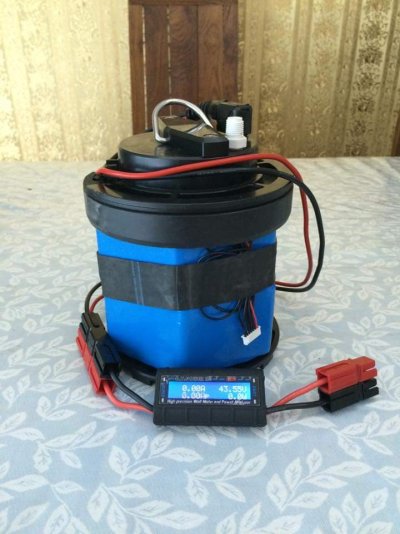rsn48
Guru
- Joined
- Feb 18, 2019
- Messages
- 2,019
- Location
- Canada
- Vessel Name
- Capricorn
- Vessel Make
- Mariner 30 - Sedan Cruiser 1969
I follow Jeff Cote out of Vancouver for most of my electrical and electronic questions and knowledge. But I also follow Will Prowse, a young guy who is self taught and has dedicated himself to helping people get into lithium and solar power on the cheap.
One product he has become enamored with are used medical lithium batteries. The batteries have turned out to be well maintained and when he has purchased them and tested them out, he has found them to still very usable. So in the link I am providing, you will notice the batteries he is using as quite small and I'm betting very light. So to replace a battery bank of 4 (whatchamacallit 31 batteries) with these smaller batteries would reduce the total amp hours available. But I thought what if you built a two level battery container, should be easily doable as the lightness of the batteries would probably be still less than the heavy 31 batteries.
Anyways on to the video, its one year old:
So I just reviewed this video thinking it was the one he posted a year ago, in which the medical used lithium batteries were a bargain. But his vlog as you can see drove up the pricing of them.
So here is a link to his video offerings, a great source of knowledge for solar equipment and lithium batteries and how to build your own systems.
https://www.youtube.com/channel/UCoj6RxIAQq8kmJme-5dnN0Q
One product he has become enamored with are used medical lithium batteries. The batteries have turned out to be well maintained and when he has purchased them and tested them out, he has found them to still very usable. So in the link I am providing, you will notice the batteries he is using as quite small and I'm betting very light. So to replace a battery bank of 4 (whatchamacallit 31 batteries) with these smaller batteries would reduce the total amp hours available. But I thought what if you built a two level battery container, should be easily doable as the lightness of the batteries would probably be still less than the heavy 31 batteries.
Anyways on to the video, its one year old:
So I just reviewed this video thinking it was the one he posted a year ago, in which the medical used lithium batteries were a bargain. But his vlog as you can see drove up the pricing of them.
So here is a link to his video offerings, a great source of knowledge for solar equipment and lithium batteries and how to build your own systems.
https://www.youtube.com/channel/UCoj6RxIAQq8kmJme-5dnN0Q
Last edited:


